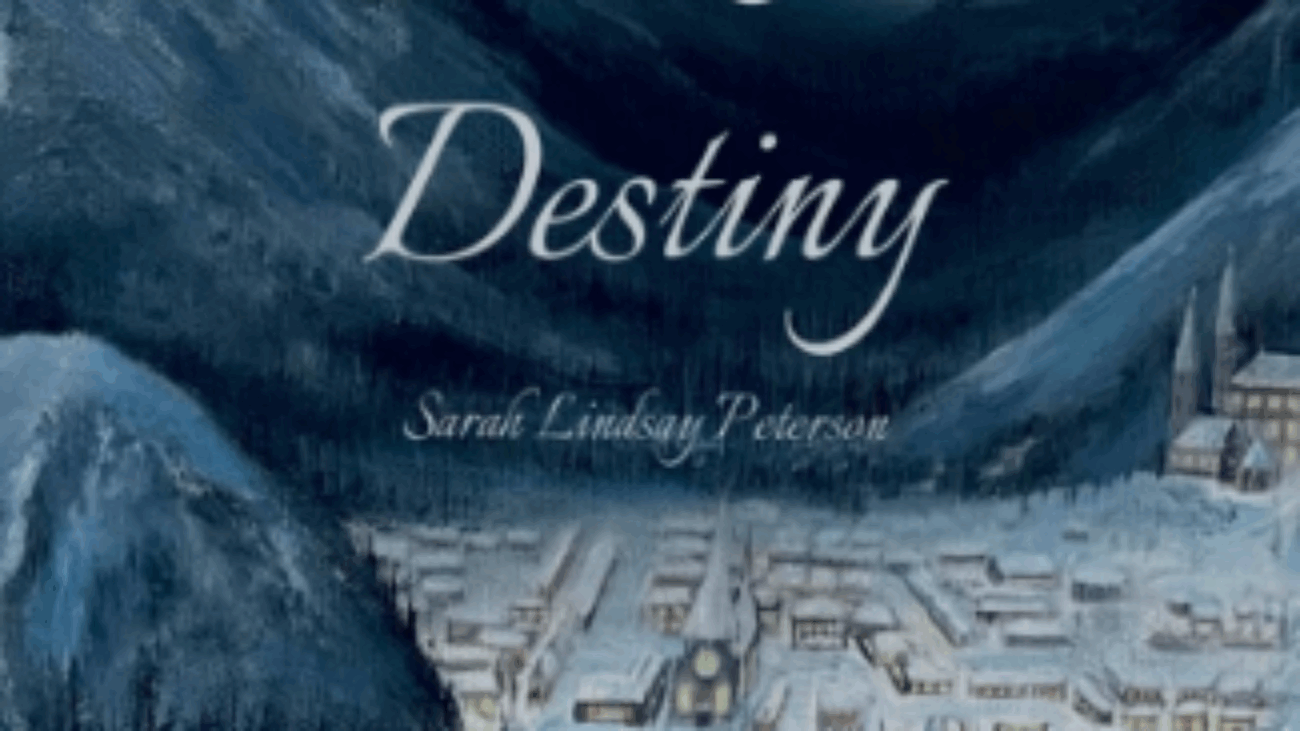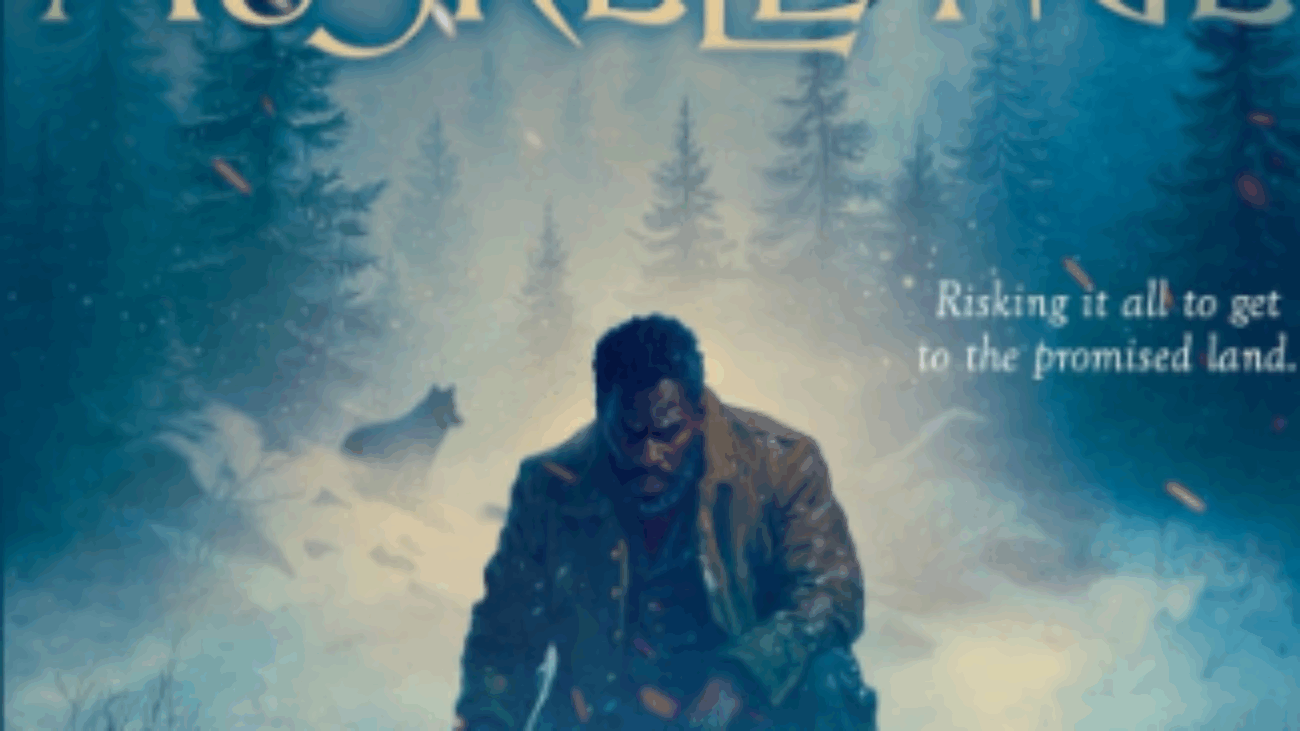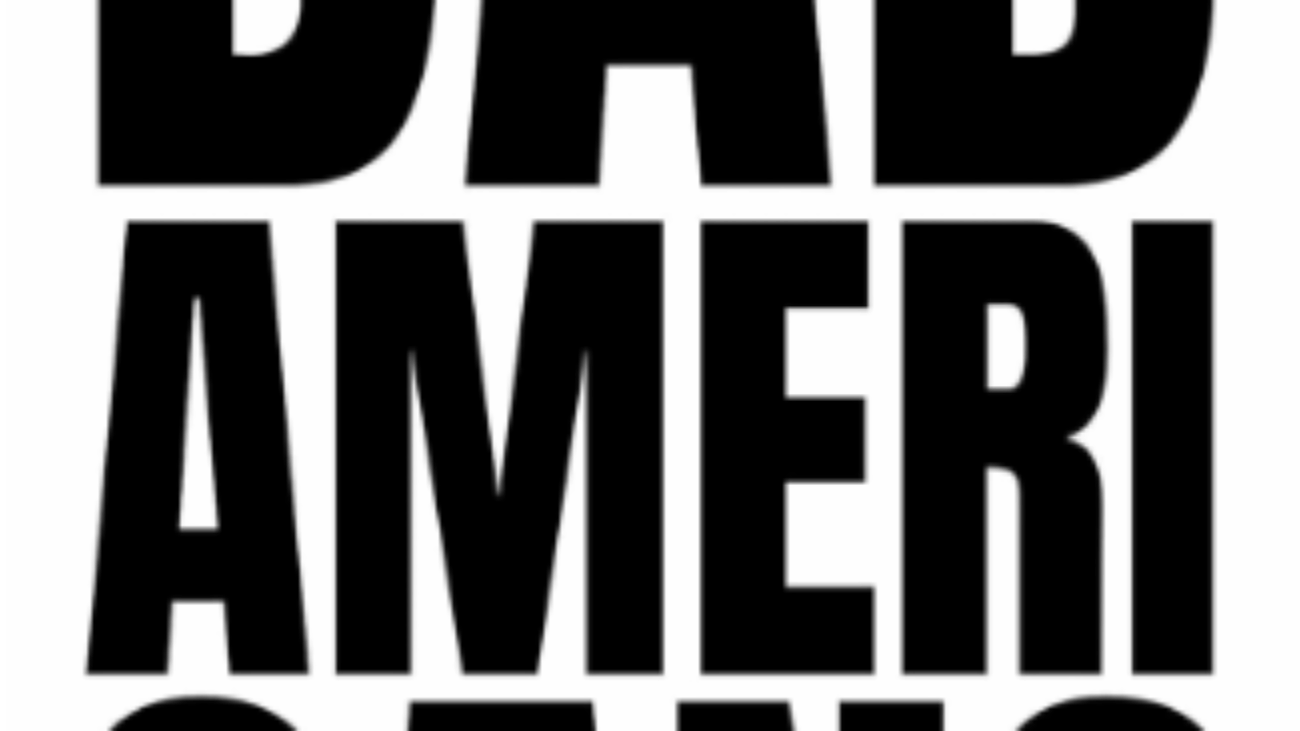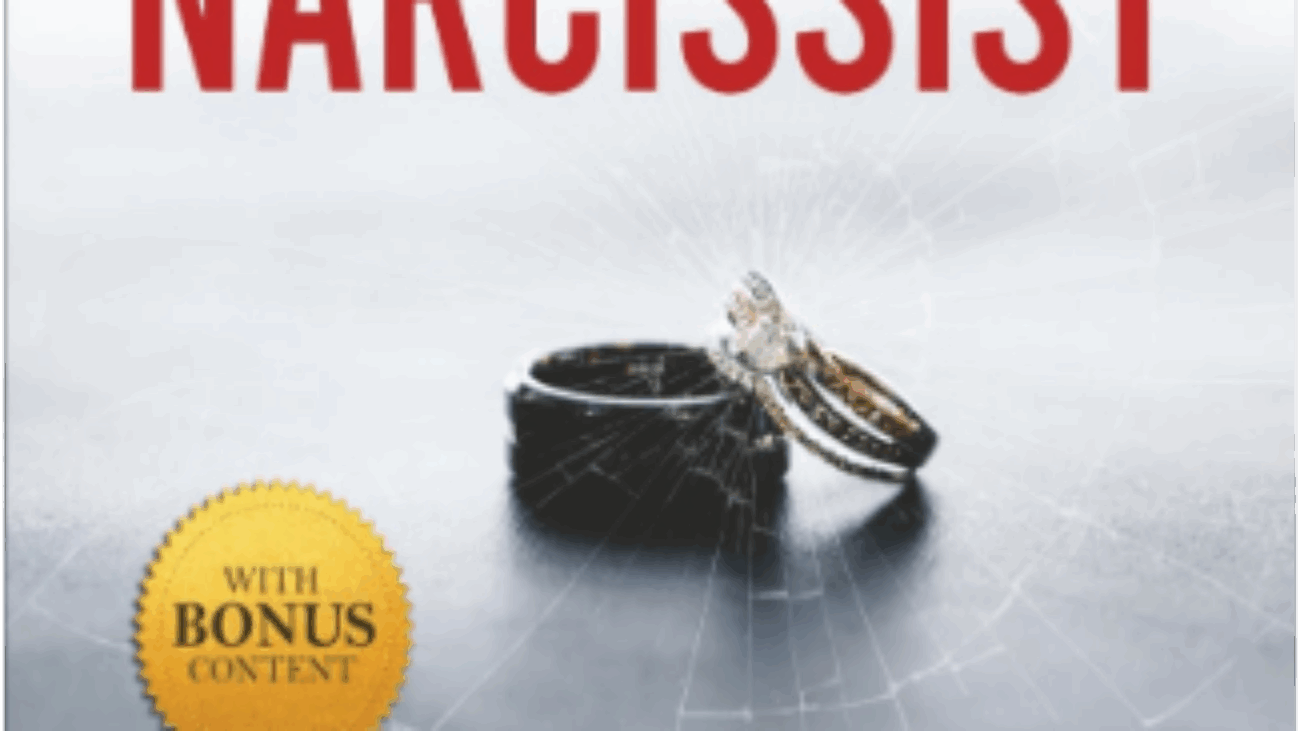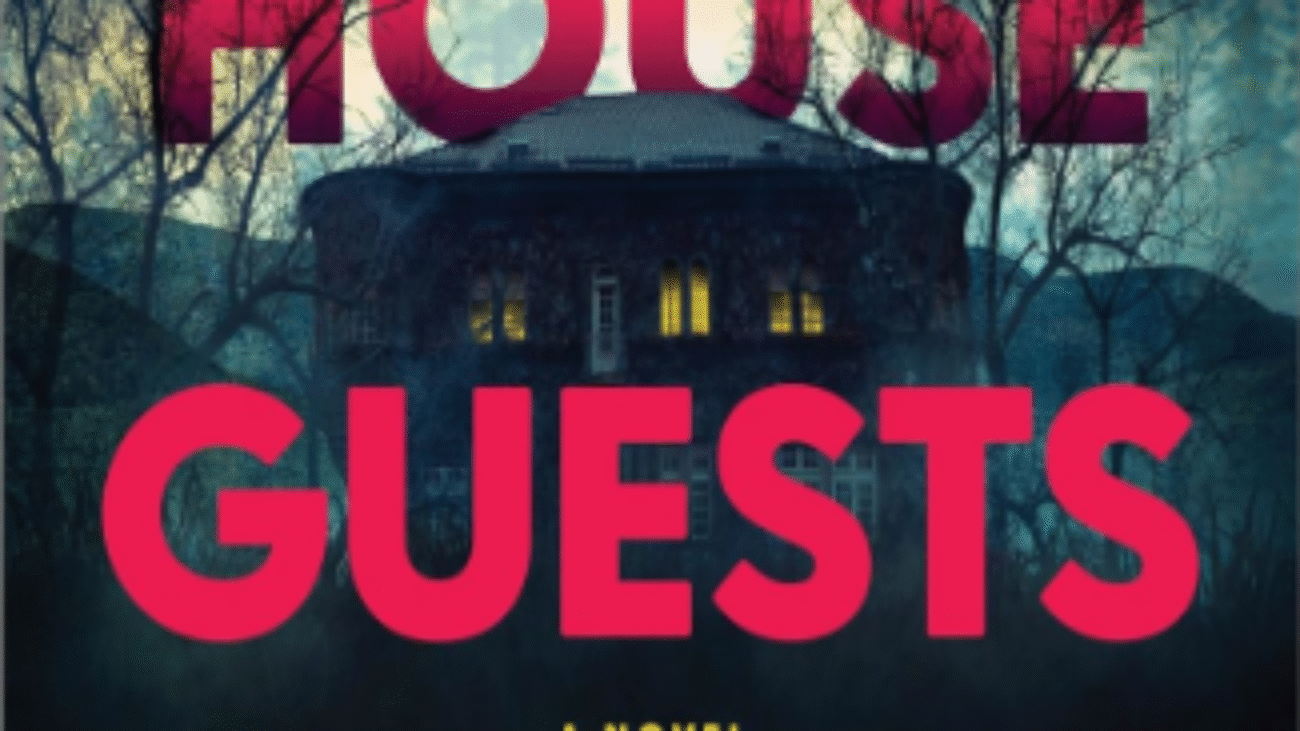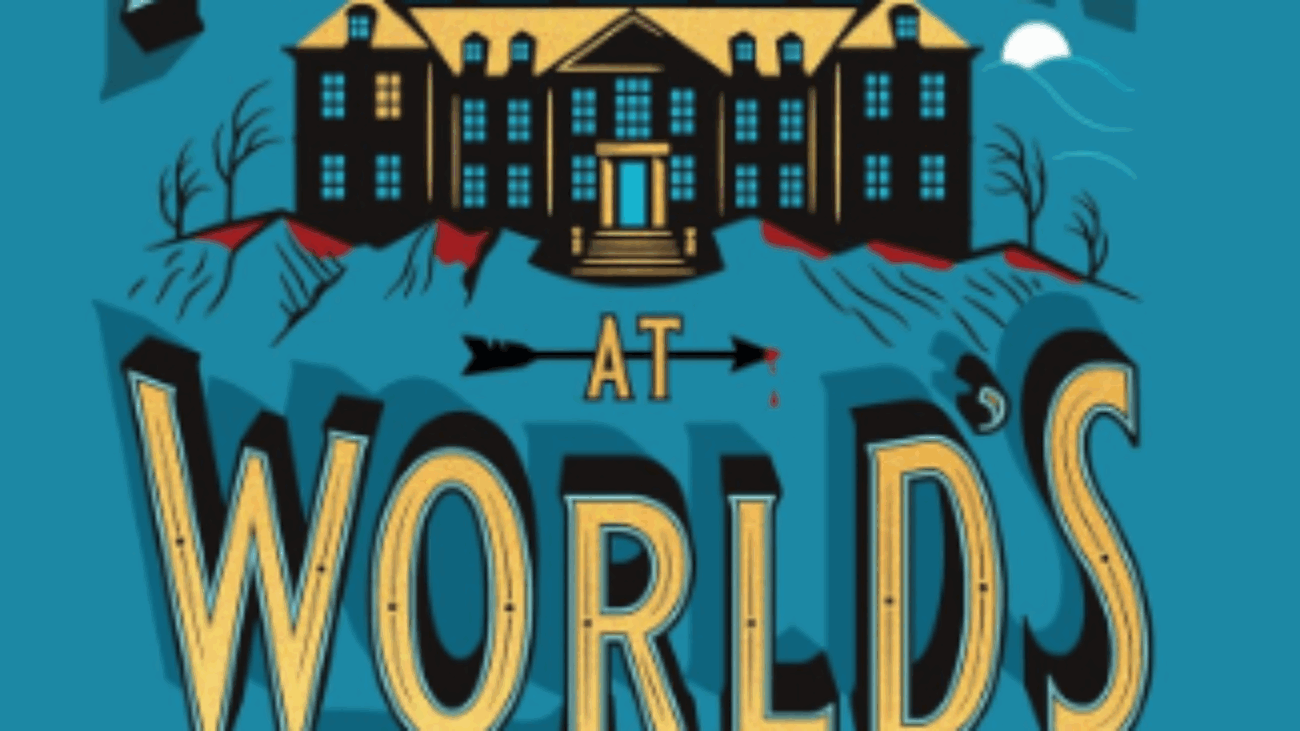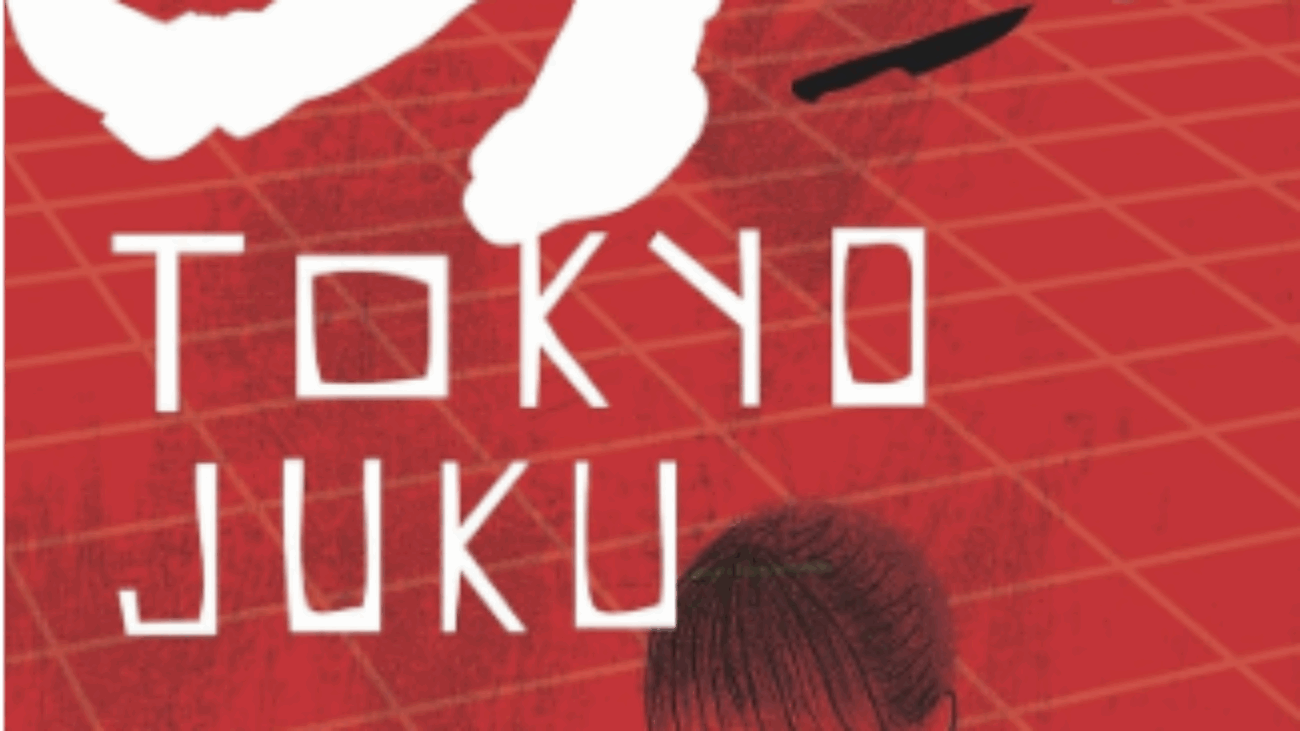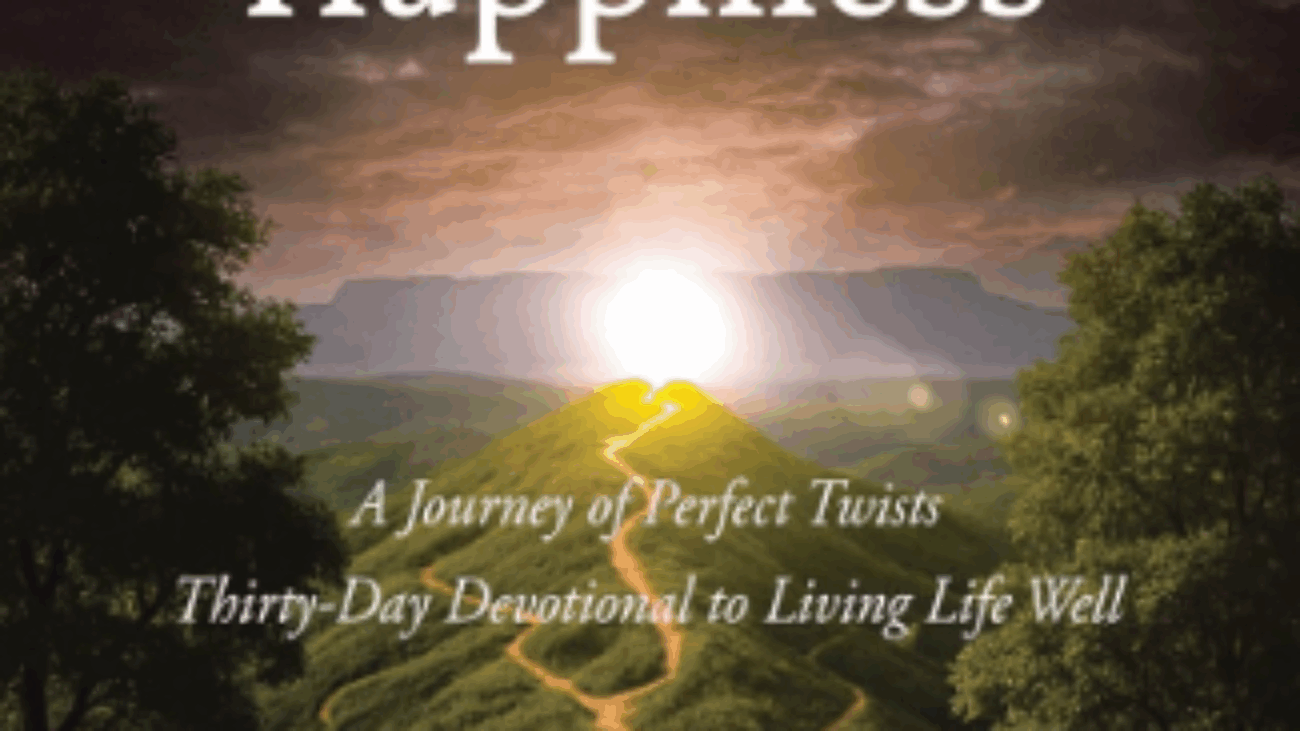Reviewed by Ephantus Gold
A War Through Destiny by Sarah Lindsay Peterson
Reviewed by Lily Andrews
“A War Through Destiny” by Sarah Lindsay Peterson is a gripping story that opens in a secluded ancient ice enclave in Dukhovia, where a sacred meeting is going on between the Shaman, a group of eight spiritual leaders. These men are seeking guidance from the Spirits on how to keep the people safe and their faith alive now that the war has ended. They are, however, taken aback by a revelation that two new heirs have been born, in what they see as a rare direct communication by the Spirits. It is further prophesied that following them will bring great turmoil and international disdain to the country, but, again, denying them will be like wishing a death sentence on themselves. What however, leaves the Shaman more shocked and deeply divided is the fact that one of the heirs is from a banished family, and the second one is from a family that had been stripped of their ancestral name following suspicion of trying to overthrow the ruler. At this point, some of them are left questioning the decision of the Spirits, wondering whether they can see a future that the men cannot or whether the Spirits are simply punishing the land. Purchase Here.
Elsewhere, the story introduces Stacy, a child termed as unaffected by the cold, unlike her brother Dan. She has a deeply ingrained belief instilled by her mother that the Dukhovian people don’t simply choose paths; rather, they are called to a purpose by the Spirits. One gets the sense that she is caught up between living in America, where she feels isolated and boxed in by expectations, and a recurring dream that feels more than just a mere dream, but which she has no idea how to answer to. Little known to her is an immediate sense of danger that surrounds her, as an assassin who has been trained since childhood and now sent to specifically kill her, arrives in America. The latter is also on a family honor redemption mission that, unknowingly to him, could potentially condemn his own soul and defy the very Spirits he believes he serves.
This story is set in the corridors of a divided heart, twisted pathways of duty and guilt, shadowy halls of prophecy and power, and what feels like a dangerous crossroad of destiny. It captures a severe cultural shock that doesn’t reveal itself as just a background detail but a critical plot device that helps raise the stakes, create a sense of sympathy, and set up dramatic irony. What begins as a seemingly simple plot quickly spirals into a complex web of moral ambiguity that is bound to bring readers into character study as well as deep internal inquiry into whether prophecies are absolute and whether destruction necessarily means evil occurrences.
Stacy comes out as a strong protagonist, who embodies the conflict between tradition and modernity, as well as the relatable struggle of chasing after a destiny denied. Her grandparents, brother and cousin, offer a living reminder of the cost of being a Dukhovian and how the past can sometimes imprison you in its traumas, silence and legacies of violence. Together with other supporting characters like Rachael, whose absence feels like it would deny Stacy’s character a much-needed boost, these individuals are well drawn in parallel, not in competition, with each shining their own light. From the start of the story, it feels like they are working in sync, to bring the novel’s central themes to a satisfying crescendo and also, a powerfully consequential one. In this context, “A War Through Destiny” by Sarah Lindsay Peterson is that book that you will want to read if you are feeling like a stranger in your own skin, caught in between worlds, and in need of something that will not only entertain you but offer something better – understanding.
Swallowing the Muskellunge by Lawrence P. OBrien
Reviewed by Rahul Gaur
Most of us take our freedom for granted, but we forget that at some point in time, the price for the freedom was so hefty that entire generations worked their whole lives and still couldn’t pay it off. Forget about freedom; your chances of surviving were extremely low. Survival depended on staying awake—awake to the cold, to memory, to illness, and to the truth people would rather ignore. And, this way, the novel opens a new world with its first chapter, where danger doesn’t announce itself with claws or fangs. It arrives quietly, offering fake promises, faith, authority, and safety. Purchase Here.
The book is divided into 4 parts, which resemble the cycles found in nature. For example, four seasons, four directions, or four stages of life. Each part shows the progression of the protagonists (Oxfords). London Oxford is not introduced as a hero but as a man trying to keep his family safe in a world that keeps changing the rules. He is free, but that freedom depends on white landowners, the Wright family. Jane Oxford, wife of London, does not trust these arrangements. She senses that promises can be broken. Whereas London always feels that it is legally free, yet economically and socially dependent. Thus, the first part is about history, family, memory, and promise.
The second part is where the book takes an interesting turn. It shows how grief, racism, fear, and lies shape the lives of London, Jane, Abner, and others around them. There is a chasing scene where the antagonist follows Jane Oxford before killing her, and it is written exceptionally well. It will definitely give you goosebumps. After the death of Jane, desperation takes over London, not hope. London drinks to numb his pain. Abner is forced to grow up fast. He must care for his sisters even though he is still a child. He knows the girls were his responsibility. The book does not soften this burden. It shows how trauma passes from parent to child. In the third part, the story becomes darker and more urgent. When bodies start piling up suspiciously, everyone is freaked out. Whom to trust and whom not. Here, the author has done full justice with the portrayal of the antagonist. He is charming, authoritative, and clever, and he uses politeness to mask the brutality. Though he is not loud and scary, to get his things done, he can be anything. One powerful insight in this part is the role of women. The women join together to protect their children. They stand up when the men hesitate. Their unity becomes a quiet form of power. Fourth part beautifully concludes the novel’s central concern and reaches its darkest and most meaningful point: that even when evil is defeated, suffering does not end. Freedom is not a single event but a constant struggle. The book also refuses simple moral clarity. Survival sometimes requires brutality, and justice is imperfect.
O’Brien has beautifully shown that living as a Black family in the 18th century was not at all easy. Their daily struggles and fear of getting into any trouble without their fault are horrific. What makes the book work is how it balances character and plot. The research done to weave real history with chilling Indigenous folklore is commendable. The author’s writing is simple, and the prose often uses short, direct sentences that mirror exhaustion, fear, and urgency. However, the lack of illustrations leaves some weakness in the narration. Regarding the pacing, it is dynamic but plays an important role in the book. For example, the middle of the book slowed down quite a bit as the settlers dealt with the logistics of camp life. However, these moments added to the “stuck” feeling of the blizzard. Similarly, in the final chapters, it spikes when there is a desperate chase through the deep snow to save young Annie. By the end of the book, the reader will definitely ask, what is the real price of freedom? And can we ever truly reach a place of peace, or is it an endless pursuit?
Since this is the first novel in the Mischief Makers series, I am sensing that all the books in the series will connect to a central story related to Wìsakedjàk. So, pretty excited for the upcoming books.
Bad Americans: Part I by Tejas Desai
Reviewed by Christine Kinori
Bad Americans by Tejas Desai is an immersive emotional roller coaster that tells the human tragedy of the pandemic era like never before. The book is set in the summer of 2020 in New York, where 12 strangers from diverse backgrounds find themselves living in a mansion in the Hamptons to find love. As they mingle, they share their life experiences, which elicit some heated debates, with each narrative depicting the complexity of modern America. Purchase Here.
Tejas Desai is a literary master, as he brings to life the deep-seated political, social, and economic divisions in each character’s narrative. From the story of a nurse recovering from the horrors of the pandemic to a queer Black man trying to find his identity and others from various walks of life, this gripping and haunting tale of survival manages to inspire a sense of humanity.
In this book, Desai uses the frame narrative to paint an illuminating picture of the struggles of modern Americans hoping to find their identity and make sense of the confusing times they are living in.
The book gains momentum as the multifaceted experiences of the 12 strangers highlight the conflicting perspectives entrenched in modern society. Tejas effectively conveys social inequality, political division, and the repercussions of the tragic pandemic in a manner that easily resonates with the reader.
The book’s striking juxtapositions are both enlightening and reflective. It speaks to Desai’s powerful mastery of storytelling. The refreshing combination of dark humor and the raw emotional tones of the characters gives the story a lot of depth. In its unique way, the plot is a compelling summary of what America has turned into over the years. It will be fair to say that the book is a social and political work of fiction inspired by the realities faced by Americans.
However, Bad Americans offers no quick resolution; instead, it inspires the reader to critically analyze human behavior. By presenting the diverse viewpoints about the current social and political polarization, the book challenges readers to confront the hard truths, which are often uncomfortable.
One of the main themes in this classic work of art is the exploration of morality versus human nature. Through the characters’ narrative, Desai perfectly encapsulates the intertwined complexity of this theme and exposes the flaws in society. However, the book also manages to capture the essence of humanity through shared experiences, such as the pandemic.
The timing of this book couldn’t have been more perfect. It not only highlights the horrific pandemic experience but also the American division. The nuanced exploration delves into some of the current deeply divisive issues, such as immigration, healthcare, race, identity, and class. By doing this, it provides a chance for a much-needed social commentary on modern America.
Bad Americans will pull you in with its realistic portrayal of contemporary society. It will have you contemplating your stance on many issues and how they all fit together in the grand scheme of things. The book is bold and impactful, skilfully narrating the complexity of our times, making it a timeless masterpiece. It is a thought-provoking piece of literature, as it serves as society’s mirror. Once again, Desai establishes himself as a novelist who is worthy of recognition.
The Ultimate Guide to Divorcing a Narcissist by Riley Ellis
Reviewed byTimea Barabas
The most valuable self-help books are those grounded in lived experience and written with a genuine commitment to helping others. This book exemplifies both qualities. Riley Ellis draws on her personal experience of divorcing a narcissistic partner to thoughtfully guide readers through the process with care. The Ultimate Guide to Divorcing a Narcissist is an accessible read, offering actionable advice and structured exercises to support readers. Purchase Here.
What distinguishes a divorce from a narcissistic partner is the complexity of the emotional, psychological, and practical dynamics involved. Riley Ellis examines the intricate web that develops over years of marriage to a narcissist, helping readers understand why the process can be particularly challenging.
One of the most difficult steps is acknowledging that you deserve a healthier, more fulfilling life. Once the decision to file for divorce is made, Ellis emphasizes the importance of remaining resolute and taking deliberate steps to protect yourself (and your children, if applicable) throughout the process.
Narcissistic individuals are highly manipulative, capable of presenting themselves as the ideal spouse or, conversely, as the victim. They also tend to shift blame onto their partner for any problems within the family. Although this façade can be convincing, it is not sustainable. Over time, or under prolonged stress and scrutiny, inconsistencies begin to show.
One factor that reliably dismantles this illusion is factual evidence. The author strongly recommends gathering and preserving objective documentation, including medical records, written communications, and detailed notes of significant events and your emotional responses to them. Whenever possible, maintain communication in written or electronic form, as it allows for accurate documentation.
The book consolidates essential guidance on divorcing a narcissistic partner into a comprehensive resource. It addresses how to build an effective support team, establish and maintain firm boundaries, safeguard your well-being, and prepare strategically for mediation and trial. The guide also includes practical financial considerations.
For parents, Riley Ellis provides focused advice on protecting children’s best interests, communicating with them in an age-appropriate manner, and understanding the range of legal parenting arrangements available once the divorce is finalized.
Rooted in the author’s personal experience, the book serves as a practical self-help guide for navigating a divorce from a narcissistic spouse. The language is candid and includes profanity, making it clearly intended for an adult audience. Through her openness and willingness to share her own experiences, Riley Ellis reassures readers that they are not alone. She offers guidance to help them move forward toward a safer and more stable future.
Murder Your Darlings: A Novel by Jenna Blum
Reviewed by Ephantus Gold
“Murder Your Darlings: A Novel” by Jenna Blum follows Sam Vetiver, a novelist with twenty-five years’ experience and New York best seller who is grappling with loneliness after fifteen years of marriage. She is drawn into the world of captivating charm and intellectual seduction, often failing to see the manipulation lurking behind the disguise. Inspired by her dad who was a writer, Vetiver’s career sprouted early at the age of four. All she would think about or spend time doing was writing mystery and magic. In present day, she is waiting to write her fifth book, “The Gold Digger’s Mistress” but is worried that she won’t hit a home run as the date to its delivery draws closer. We meet her on her final “Sodbuster” book tour, whose culmination sees her tired and lonely, and as usual, with no one to celebrate or commiserate with. Purchase Here.
But much to her shock, she receives an email from a familiar author turned “admirer” who she deems “ridiculously successful” and “a bad boy of literature,” with whom she shares a publisher. In the message he appreciates one of her books which he claims “changed him forever in some invisible but indelible way.” Curious as to why he, “the real deal” reached out, Sam sets on a journey to find out. Little does she know that her arrival at the venue where he is hosting one of his book reading, sends chilling waves down the spine of a stalker who has been trailing him for the longest time, threatening to pull Sam into an obsession where she is not just an “intrusion” but a “betrayal” that demand immediate response.
This book pulls the reader into a high-stakes psychological labyrinth where literary ambition collides with dangerous obsession. You are plunged into tense moments, where every one of them threaten to twist in a potentially dangerous game, making you loudly wonder who the true architect of the story is, and which character seems destined for a tragic end. It masterfully weaves a dual narrative plunging the reader into the chilling, fractured mind of an antagonist, which it does with the same intimacy and passion that it grants its weary protagonist. I love how this novel transcends its thriller framework to deliver a profoundly humanly relatable story where it explores the need to cure loneliness, and how that can lead to trusting the wrong people. I believe that its raw power lies in how it connects the dots between traumatic pasts, the many times dangerous commodification of people, and the desperate, flawed choices we all make when we fail to see our own worth. “Murder Your Darlings: A Novel” by Jenna Blum is that one book that holds a dark mirror to the soul of anyone who has ever longed for a connection. It will seduce you with its prose, haunt you with its insights, and leave you breathless with its twists.
The House Guests by Amber and Danielle Brown
Reviewed by Ephantus Gold
“The House Guests: A Novel” by Amber and Danielle Brown was a book that did not ease me in gently but grabbed me by the collar right from the first page. It began with Iris as she remembered the most haunting thing in her life, being forced to watch her own mother take her life in front of her. The gun had been bought from a pawn shop with money her mother had stolen from the most unlikely person where she worked. That opening was shocking and honestly disturbing and it set the tone for what turned out to be a raw and unsettling journey. Purchase Here.
Iris had already been scarred by years of neglect and abuse from her mother, and those wounds never healed. She kept having nightmares, she could not sleep without chemicals in her system, and the chaos in her head never seemed to stop. Even with all that, she still tried to hide her desperation from her boyfriend Eli, holding on quietly to the hope that he would not leave her. When I found them, they were on their way to a lonely lake, Eli’s idea of the cure for her constant torment, and maybe a way out of the heavy block of stone she had been buried under for over a year.
At the lake, Iris came across something that rattled me as much as it did her. A strange man was bent over the dirt, digging frantically like he wanted to hide something or someone. The image burned into her, and when Eli’s friends later joined her, she tried to tell them but none of them believed her. They mocked her, saying it was her bad eyesight, and when she mistook a doll for a severed arm, she was ridiculed even more. Eli himself did not defend her when he joined them but only grew colder, turning his attention toward another woman. The doubt took over, and I kept asking myself the same thing Iris did – Was she truly losing her mind, or was she the only one who saw the truth nobody else dared to face? That scene pushed the story into deeper dread and put doubts in me about who to trust.
The structure of the story felt like a slow spiral where every step down brought more uncertainty, moving from strange sightings, like when one of the friends claimed to see a skull, to Iris’ sleepless nights, trapped in her own fear. That layering of dread made the book heavy and claustrophobic. The prose itself worked like a trap, sharp and unsettling, even in quiet moments. All of it carried menace. So when betrayal came, it hit harder, especially because Eli never stood by her.
The characters were painfully real in how frustrating they were. Iris clung to Eli and his love, but he mocked her fragility and eventually discarded her like she was nothing. In the worst turn, he even handed her over to a friend, like she was a thing to be passed to the highest bidder. That made him more terrifying than any ghostly shadow or imagined figure in the story. Her friends were no better, brushing off her fears, mocking her mistakes, leaving her completely alone.
Trust, betrayal, and gaslighting ran through every page. I kept asking if Iris was imagining everything or if she was the only one who refused to be silenced. “The House Guests: A Novel” kept that question alive, not only about Iris but about the people around her. That was what made it devastating, and yet I could not look away.
The Murder at the World’s End by Ross Montgomery
Reviewed by Ephantus Gold
“The Murder at World’s End” by Ross Montgomery is a thrilling mystery that will leave the reader staring into the middle distance, replaying the clues in their mind, not with frustration but with a sense of awe at the author’s craftsmanship. It follows Stephen Pike, a young man overwhelmed with immense joy after arriving at his new job at Tithe Hall, where the Viscount of World’s End, Lord Stockingham, resides. This is his only chance at redemption following a successful rehabilitation after serving time, due to a situation in which he claims to have made an “unpardonable error of judgment.” At Tithe Hall, he learns that his job includes a special instruction from the Viscount’s cousin to Mr Stokes, the head butler at Tithe Hall for twenty years, that as a footman, he should be brought on with utmost discretion. Purchase Here.
Pike comes in at a crucial historical moment, according to the Viscount, when all signs point to an inevitable apocalypse. He claims to have credible information regarding a comet that will pass very close to Earth, leaving behind fatal, poisonous cyanogen gases that will kill every living creature therein. Over the next few hours, the staff ensures every room is airtight, in a desperate bid to survive the annihilation. Pike’s duty, however, also involves “babysitting” a woman whom people speak about in the way dragons are described in fairy tales. However, his encounter with her leaves him speechless by the sheer knowledge and intelligence she exhibits, especially when she reveals her findings about the comet, and right after, she tells him why she hates Stockingham. The next day sets in motion an event that catapults the story into a relentlessly tense dive. The viscount is dead right in his sealed study, and suddenly all eyes are on the one person with a criminal record. His possible alibi? The woman he stayed with through the night – the same woman who had threatened to kill the Viscount.
This tale sets in motion an odd pairing of protagonists who are forced to look beyond their age difference (which is actually quite large) in a bold endeavor to investigate a crime in which they are key suspects. They bring to life an unlikely alliance between a disgraced young man and a sharp-tongued woman who has been written off by her society. Their story is built on a foundation of rich interconnected themes that elevate it from a simple mystery to a complex social and psychological thriller, one that explores the corruption of the upper class and the illusion of authority, holding a mirror to society’s twisted perception of persons that are too intelligent to be controlled or too flawed to be granted a second chance. Here, one gets the sense that the mere weight of human greed is way more dangerous than a “comet’s gases.” As I read, I found myself forced to weigh every character’s motive, not as a detached observer but as if I were in the room with each of them. The stakes remain perfectly pitched all through the read, and every new chapter exhibits tension that tightens like a vise around a circle of trust that is forced to shrink with every revelation.
“The Murder at World’s End” by Ross Montgomery stands out for its ability to hold the revelation of the culprit until the final, breathtaking pages. I, however, believe that its true genius lies not in the delay but in the flawless execution of its narrative architecture and character-driven misdirection. If you need a book that is a master class in suspense, and one in which the end of the world is the backdrop of an even more gripping crime scene, then this book is your perfect next read.
Tokyo Juku by Michael Pronko
Reviewed by Timea Barabas
A teacher’s murder changes a young student’s life forever and threatens to rip through the social fabric of Japan. At first glance, Michael Pronko’s Tokyo Juku appears to be a suspenseful modern detective novel. However, it quickly becomes clear that the story offers much more. Beneath the tightly woven murder mystery lies a sharp critique of a uniquely demanding education system and its many ramifications, both on an individual and societal scale. Purchase Here.
What truly brings the novel to life, though, are the characters; each vividly portrayed as their lives unfold between the lines. Michael Pronko’s characters simply exist, without ever needing to persuade. Their actions, interactions, words, and thoughts are so organic that they naturally inhabit the space within Tokyo Juku.
After failing her exams the previous year, Mana is enrolled in the juku system to train mind and spirit in preparation for another attempt at gaining admission to a top university. She is determined to turn failure into conquest, akin to a ronin. What was meant to be another sleepless night of intense study takes a dark turn when the deep stillness is shattered by unexpected noises. Hesitant, Mana goes to investigate, only to discover her mentor, the school’s most prominent professor, had been stabbed.
Detective Hiroshi Shimizu is assigned to lead the murder investigation. Stepping outside his usual comfort zone, forensic accounting, Hiroshi brings a unique perspective to this complex case. As he follows multiple leads, he uncovers the murdered professor’s polarizing presence in both professional and personal spheres.
Just as he begins to get a firm grip on a thread that could reveal the motive and the perpetrator, a new dimension to the case emerges. The numerous conflicting leads threaten to overwhelm the investigation (and the narrative itself), but Hiroshi, guided by Michael Pronko’s precise penmanship, expertly maintains control and delivers a neatly packaged resolution.
What gives this work of fiction its strong sense of authenticity is, in large part, the infusion of the author’s own experiences. Michael Pronko, an American-born literature professor who has been living in Japan for more than two decades, pulls back the curtain to reveal the inner workings of the Japanese education system.
In my view, the most distinctive quality of Tokyo Juku lies in its sense of in-betweenness. The author passionately explores the spaces in between identities, cultures, and states of being. His characters embody this tension: some come from multiethnic backgrounds, while others travel and immerse themselves in new cultures. While a few seamlessly integrate multitudes, others can’t seem to settle on stable ground. Yet the most striking liminal space is the period of preparation before the exams; a suspended moment for students who have previously failed, caught between past disappointment and future possibility.
While Tokyo Juku is the seventh book from The Detective Hiroshi Series, it also stands firm as an independent book. Michael Pronko’s welcoming narrative voice makes any reader feel at ease, no matter when they arrive.
Imperfect Happiness: A Journey of Perfect Twists- Thirty-Day Devotional to Living Life Well by Terry C. Fleitz
Reviewed by Lily Andrews
“Imperfect Happiness: A Journey of Perfect Twists – Thirty-Day Devotional to Living Life Well” by Terry C. Fleitz is an inspiring Christian devotional that aims to inform and help readers navigate various challenges and thus be able to live in the best way possible, with a strong sense of purpose, wisdom, positivity, and faith. Purchase Here.
Fleitz begins with a childhood memory. He remembers his sixth-grade teacher, Sister Magdalene, explaining what would, in years to come, become a strong basis for his understanding of integrity. She was the first person from outside the home to challenge him to think seriously about right and wrong, and also to see moral choices as deliberate acts rather than automatic responses. His parents were, of course, the first ones to instill in him a sense of honesty, hard work, and compassion. This they did, not through stern lectures but through deliberate behavior and choices. Over time, he would come to discover several life-changing truths. They include: living the best life is directly connected to building a closer relationship with God, that true success cannot be measured by material gain or social status, and that the depth of one’s faith and the sincerity of their relationships is directly tied to a lasting sense of joy, peace, and fulfilment.
As you read through this book, you can’t fail to notice Fleitz’s use of metaphors and imagery to communicate certain truths in more depth. They include “From the Ocean to the Mountain,” a real transition that he uses to describe two contrasting stages in his life’s journey, “The Organization” which apart from being a physical place, dramatizes general worldly success and moral compromise, “The Desert,” which represents a state of burnout and spiritual emptiness that follows overwork and misplaced ambition, and “The Room of Shame,” a metaphor that illustrates the inner chamber of conscience, that is, the place within oneself that holds guilt and regret. These, among others, beautifully and profoundly create a literary structure that mirrors his message, each marking a stage in the reader’s heart as they learn to live well.
This book is rich with scriptural references, especially verses from the Book of Psalms. This rich incorporation makes it feel meditative and authentic, with a sense of spiritual intimacy that draws the reader inward. It has the advantage of combining a devotional sense with memoir, in that the author can merge experience with reflection, grounding his words in a realism readers can relate to and, maybe, learn from. Talking of structure, this book is complex, but in a good way. Every chapter has a “Pause and Reflect” section that feels intentionally placed to interrupt the narrative flow and shift the reader’s attention to self-examination. Additionally, the structure shifts between narrative, to prayer and song, in a multi-layered design that is a show of clever craftsmanship and a form of artistic control. Readers will agree that this style of writing is unique and helps prevent the text from becoming monotonous.
“Imperfect Happiness: A Journey of Perfect Twists – Thirty-Day Devotional to Living Life Well” by Terry C. Fleitz is a book that needs to be studied with a pen and a notebook, owing to its depth, density, and reflective nature. This study’s approach is also likely to move the reader from passive observation to active participation. Readers seeking meaning beyond material success, as well as those who have spent years chasing achievement, will deeply identify more with Fleitz’s experiences and discoveries. Additionally, those who have faced illness or loss will find genuine comfort in his honest retellings, which do not sensationalize suffering but rather treat it as a teacher that often helps draw meaning from even the darkest experiences. This is an essential read that intelligently reveals just how adversity can be redemptive and how faith can transform pain into purpose, despair into growth, and hardship into spiritual renewal. Excellent work, Terry Fleitz!

